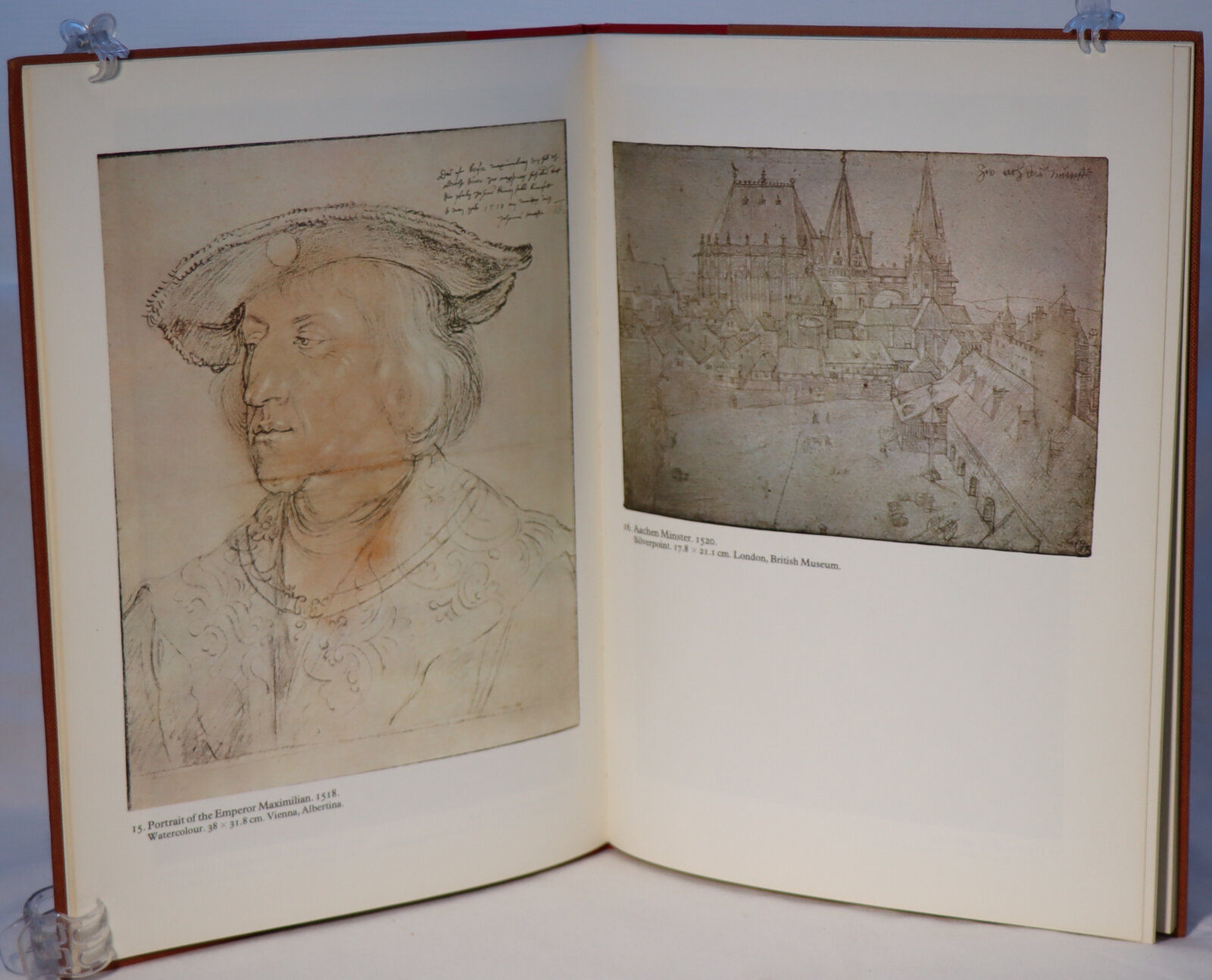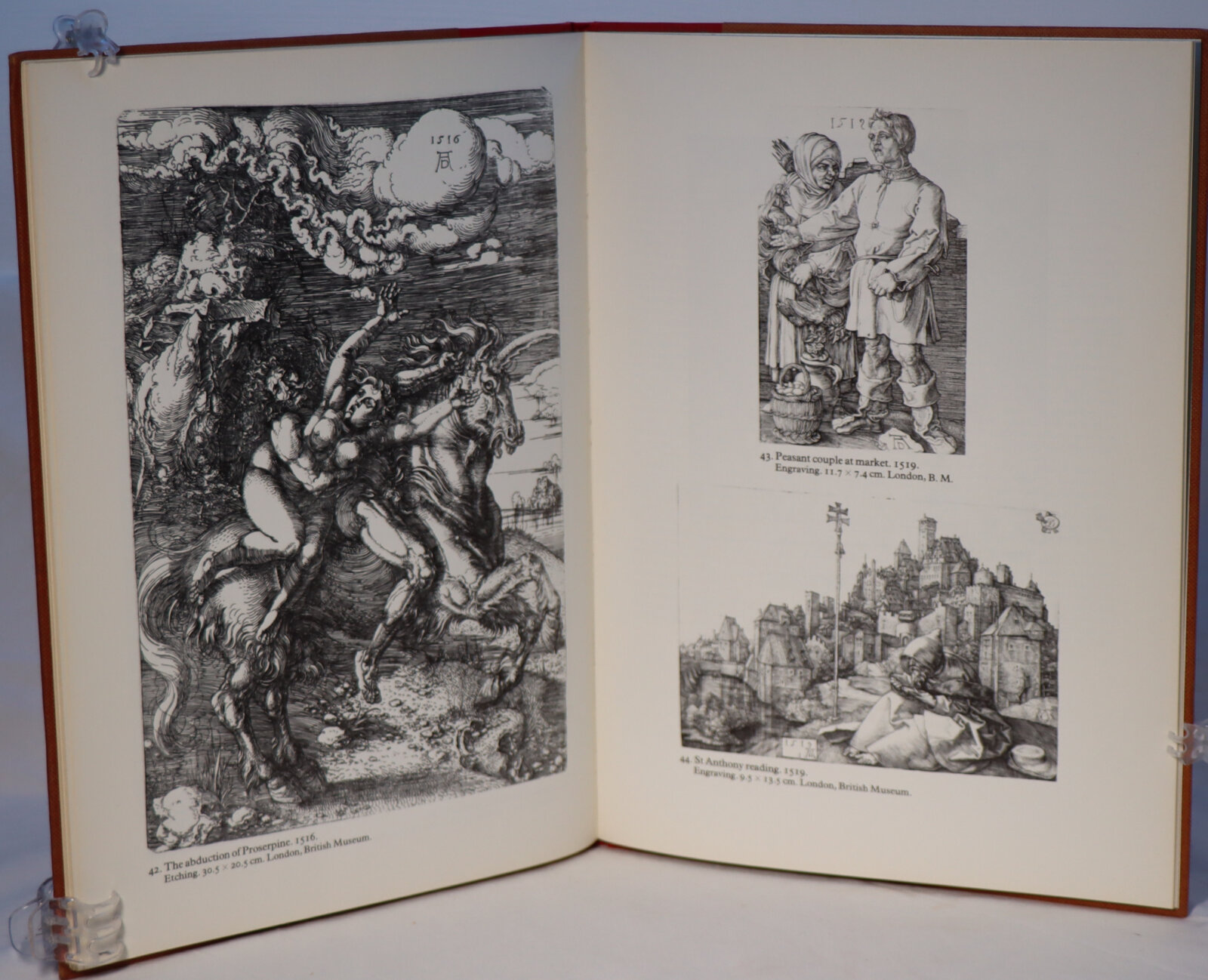Durer. Paintings, Drawings and Prints.
Printed: 1969
Publisher: The Folio Society. London
Edition: First edition
| Dimensions | 22 × 30 × 1 cm |
|---|---|
| Language |
Language: English
Size (cminches): 22 x 30 x 1
Condition: Fine (See explanation of ratings)
Item information
Description
Brown cloth boards with gilt title on the red leatherette spine.
F.B.A. provides an in-depth photographic presentation of this item to stimulate your feel and touch. More traditional book descriptions are immediately available.
A superb largely unread copy of an early Folio First edition
Particularly well-preserved overall; tight, bright, clean and strong.
Albrecht Dürer (21 May 1471 – 6 April 1528),sometimes spelled in English as Durer, was a German painter, printmaker, and theorist of the German Renaissance. Born in Nuremberg, Dürer established his reputation and influence across Europe in his twenties due to his high-quality woodcut prints. He was in contact with the major Italian artists of his time, including Raphael, Giovanni Bellini, and Leonardo da Vinci, and from 1512 was patronized by Emperor Maximilian I.
Dürer’s self-portrait at 28 (1500). Alte Pinakothek, Munich.
Dürer’s vast body of work includes engravings, his preferred technique in his later prints, altarpieces, portraits and self-portraits, watercolors and books. The woodcuts series are more Gothic than the rest of his work. His well-known engravings include the three Meisterstiche (master prints) Knight, Death and the Devil (1513), Saint Jerome in his Study (1514), and Melencolia I (1514). His watercolours mark him as one of the first European landscape artists, while his woodcuts revolutionised the potential of that medium.
Dürer’s introduction of classical motifs into Northern art, through his knowledge of Italian artists and German humanists, has secured his reputation as one of the most important figures of the Northern Renaissance. This is reinforced by his theoretical treatises, which involve principles of mathematics, perspective, and ideal proportions.
Want to know more about this item?

Share this Page with a friend














